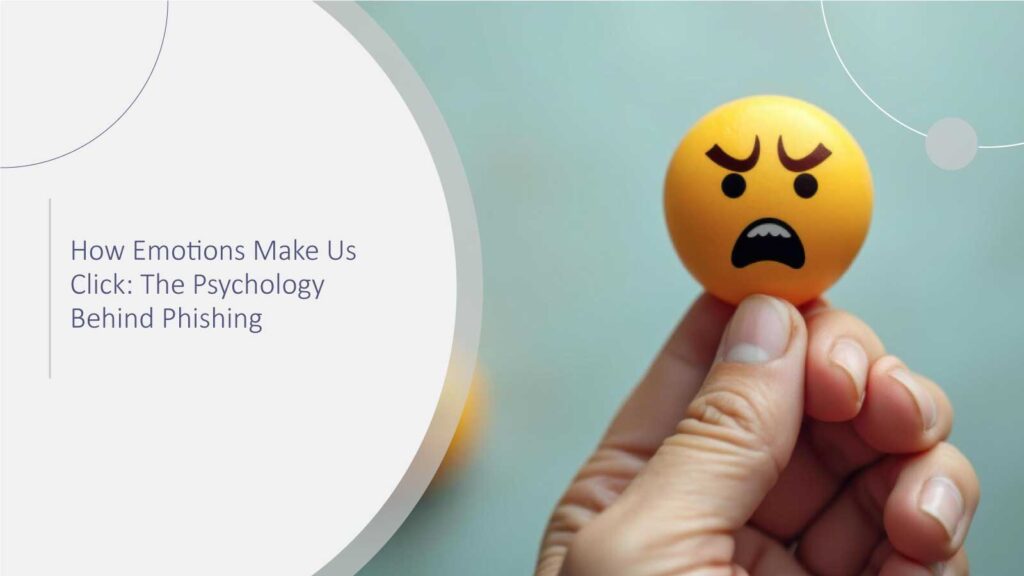Have you ever thought that intelligent, careful, and professional people still get tricked by phishing emails? It is not because they are irresponsible; it is because phishing is not only a technical issue, but also a psychological one. Cybercriminals are aware of it, and therefore, they do everything to make their victim activate their chain of emotional reactions in which they lose control over their logical thinking. The main battle within cybersecurity does not take place in your mailbox but in your guts. Global damage from cyberattacks is projected to hit about US $10.5 trillion annually by 2025 (a 300% increase from 2015).
The Emotional Blueprint of a Phishing Attack
Phishing attacks or emails are specifically designed not to be understood by the logical part of the brain, but rather the emotional part. Hackers do not engage in direct attacks on computers; instead, they take over the human mind. According to the FBI Internet Crime Report (2024), phishing is the most frequently reported cybercrime that causes huge financial losses to the U.S. annually.
However, the question remains how these digital deceivers manage to break into the networks of educated and vigilant professionals? They do so by turning emotions into their access keys. Fear, urgency, curiosity, greed, and empathy – one or more of these may be a hacker’s weapon.
Fear: the strongest of all influences. Statements like “Your account has been compromised” or “Payment declined” create a panic situation that pushes aside reason.
Urgency: terms such as “Act now” or “Your access expires in 2 hours” make the readers feel that they have to act immediately without confirming the information.
Curiosity: “See who viewed your profile” or “You have a secure document” are ways to attract even the most distrustful users into a trap.
Empathy: “A coworker in a difficult situation” and “a charity drive” are two examples of how compassion is manipulated.
Greed: Promises of rewards or bonuses instantaneously link with the thirst for quick gains.
Why Smart People Still Click
Not even professionals from the field of cybersecurity are fully protected from such threats. This is because phishing is dependent on cognitive shortcuts, which means our brain uses certain mental patterns in order to come to a quick decision. When we are stressed, trying to do several things simultaneously, and are tired (which is the condition of most professionals), then our brain chooses to react on its instinct. Insider-threat component present in 50% of breaches, with negligence/co-opting accounting for 44% of insider-related events.
Phishing letters are usually sent during the time when people are busiest with their work and try to represent well-known companies whose identities are trusted by the victims – Amazon, Microsoft, or even the company’s internal HR department – in order to make them not check the details of the communication too thoroughly. Hence, the perpetrator’s timing is not coincidental but rather tactical.
It is similar to the act of robbing someone of their wallet, but in a digital way. While you are not paying attention, you are less protected, and that is the moment when attackers do their job.
The Science of Trust and Manipulation
According to a 2023 Stanford University study, 88.4% of the data breaches examined were the result of human error. Human errors are often the result of emotional manipulation. So, what’s the reason? Our brain processes emotional input much faster than rational input. Under threatening or exciting situations, our body releases adrenaline, which limits our focus, and we become incapable of controlling our actions. Human failure causes nine out of ten cyber incidents.
When you read this sentence once, you might be amazed that cyber attackers are so far ahead of you because they know the pattern better than typical users. Based on this brain process, they develop scam emails that are hard to distinguish from the original ones because the main way that is used to establish trust is not through facts but through recognition and feeling a connection. Learn more about what happens beyond phishing.
Staying One Step Ahead
Having a good emotional awareness is as important as having a spam filter for your email account. Professionals can overcome emotional manipulation by following the steps described below:
Do not immediately open an attachment or link; instead, take a moment to calm yourself down in case the email evokes emotions. Usually, emotional emails imply urgency – don’t allow yourself to be controlled by it.
Know the sender. Address the information you are given with a pinch of skepticism and always recheck the details. If there is a slight change or a different domain, the sender’s email is most likely fraudulent.
Consider the matter. Would your CEO use a gift card to trick the company via email?
Layer up your security. When there is multi-factor authentication, your account will still not be accessible even if you click on the phishing link.
Keep your ego in check. Instead of falling for the tricks, always ask yourself whether the given offer is too good or too bad to be true.
Conclusion
Phishing does not depend on the intellectual level of the victim; rather, it is a matter of influence.
Addressing the biggest cybersecurity gap: human risk. The attackers do what is called “exploiting” what humans are made of: emotion, trust, and answering to a request. Acknowledging this fact is the first step towards the opposite, anyway. When it comes to cybersecurity, being aware is not only a protective measure – it is also powerful.
FAQs
1. Why are phishing emails so convincing?
Phishers use the same methods as respected companies, bring emotion into play, and leverage the need for a quick decision to get around the logical part of our brain.
2. Can AI detect phishing better than humans?
While AI-powered agents are able to identify potential threats based on irregularities in speech and structure, human vigilance is still required to make the final decision, taking into account the context.
3. What’s the most common phishing tactic today?
Currently, the largest share of phishing attacks is the takedown of login credentials by setting up fake login pages and distributing them through email or SMS.
4. How often should organizations conduct phishing simulations?
Simulated attacks done every quarter have a good effect on employees, as they keep them alert and raise awareness in the long run.
5. What’s the best immediate step after clicking a phishing link?
The best thing to do in such a case is to cut a connection with the network, alter your passwords, and inform the IT or the cybersecurity department.
Don’t let cyber attacks catch you off guard – discover expert analysis and real-world CyberTech strategies at CyberTechnology Insights.
To participate in upcoming interviews, please reach out to our CyberTech Media Room at info@intentamplify.com.


